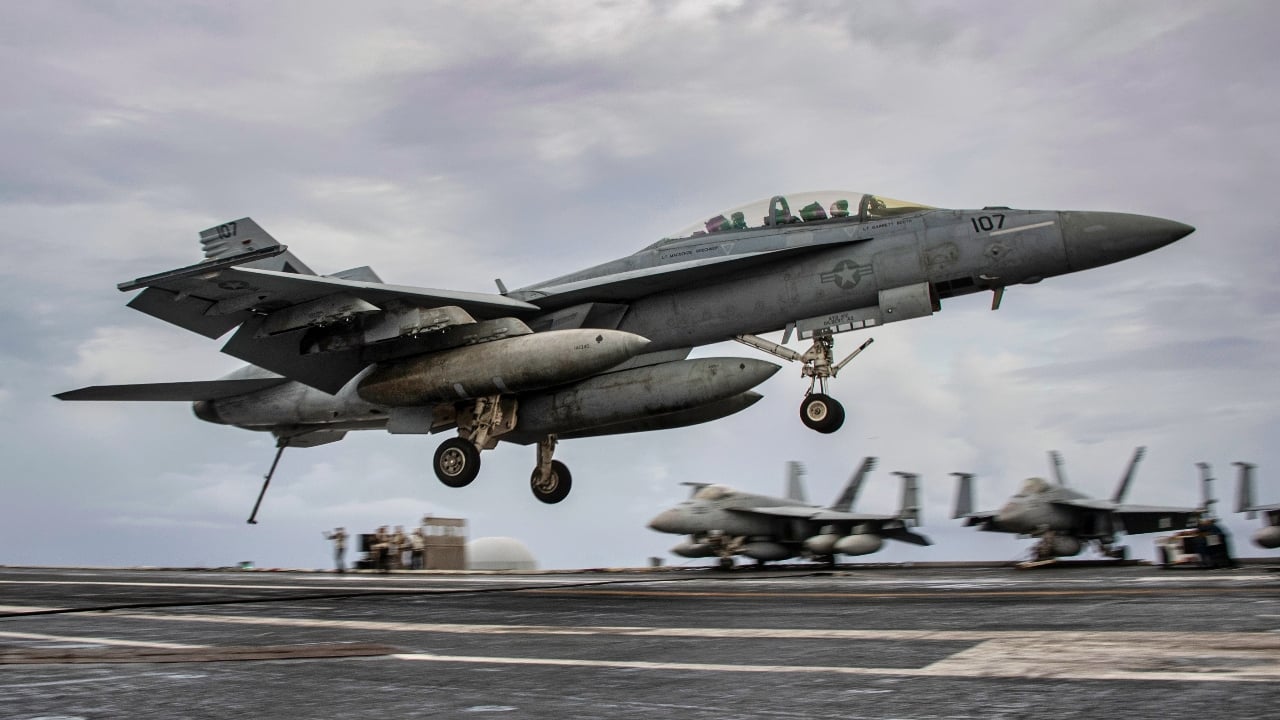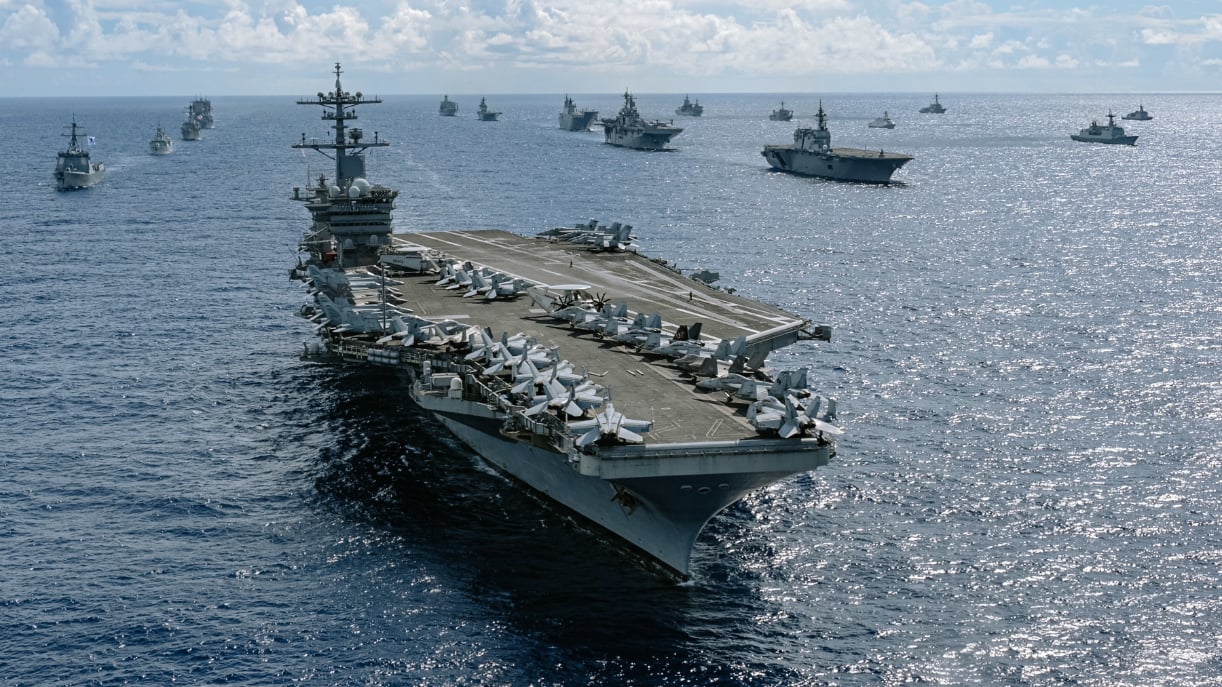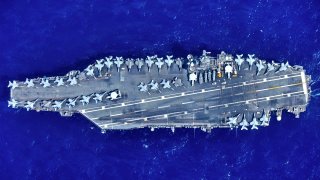The U.S. Navy Just Revealed Its Greatest Achilles Heel in the Middle East
The U.S. Navy’s Nimitz-class carriers, known for their advanced capabilities and nuclear power, depend on conventionally fueled escorts and aircraft, which became evident when the USNS Big Horn, a key oiler, ran aground and partially flooded off Oman. This incident leaves the Abraham Lincoln Carrier Strike Group without its primary fuel source, exposing a vulnerability in the Navy's reliance on aging oilers.
Summary and Key Points: The U.S. Navy’s Nimitz-class carriers, known for their advanced capabilities and nuclear power, depend on conventionally fueled escorts and aircraft, which became evident when the USNS Big Horn, a key oiler, ran aground and partially flooded off Oman. This incident leaves the Abraham Lincoln Carrier Strike Group without its primary fuel source, exposing a vulnerability in the Navy's reliance on aging oilers. Although the Big Horn's crew is safe, the Navy must now scramble to find alternatives, potentially turning to commercial tankers. The accident highlights the strain on U.S. Navy logistics and its aging support fleet in critical regions.

The United States Navy's Nimitz-class nuclear-powered aircraft carriers have been touted as being among the most advanced warships in service, with "unlimited" range and endurance. However, such claims should be taken with a grain of salt. The flattops rely on conventionally-powered surface escorts to screen for enemy aircraft and submarines. Those escorts – as well as the air wings of the carriers – are dependent on a source of fuel, even if the carrier isn't.
This is a true Achilles Heel for the mighty aircraft carrier, which was made all too clear on Monday when one of the U.S. Navy's replenishment vessels ran into serious problems.
The U.S. Navy oiler USNS Big Horn ran around and "partially flooded off the coast of Oman, leaving the Abraham Lincoln Carrier Strike Group without its primary fuel source," gCaptain first reported.
The incident involving the 33-year-old single-hull Henry J. Kaiser-class oiler was confirmed by U.S. Navy officials.
"USNS Big Horn sustained damage while operating at sea in the U.S. 5th Fleet area of operations overnight on Sept. 23. All crew members are currently safe and U.S. 5th Fleet is assessing the situation,” according to a statement from a U.S. Navy official provided to Sam Lagrone at USNI News.
The latest reports suggest that the crew of USNS Big Horn (T-AO-198) is safe, and there have been no signs of an oil leak from the unarmed warship. Privately owned tugboats were working to support the oiler when the damage was assessed.
The USS Big Horn – What We Know
The U.S. Navy maintains a fleet of 18 of the Henry J. Kaiser-class replenishment ships, with 15 being oils – but a full dozen are not double-hulled like most modern commercial tankers in service today, mandated following the Exxon Valdez oil spill.
The replenishment vessels, which are operated by the Military Sealift Command, carry fuel for U.S. Navy combat vessels as well as the jet fuel for the aircraft on the Navy's carriers, including USS Abraham Lincoln (CVN-72).
According to the Navy Times, it is now unclear if any other replenishment ships are available in the Middle East – and none besides T-AO-198 have been in the region for months. gCaptain reported that the U.S. Navy may need to scramble to find a commercial tanker – but that could require the installation of a "Consolidated Cargo Handling and Fueling (CONSOL) system for underway replenishment operations."
It is also unknown what danger USNS Big Horn could be in from the Iran-backed Houthi rebels in Yemen or other groups in the region. The Pentagon has not publicly commented on when the vessel could be targeted by drones or missiles.

The U.S. Navy has begun to replace the aging oilers, which have been in service since the mid-1980s, with the John Lewis-class replenishment oilers. It was just last Saturday that the newest T-AO, the USNS Lucy Stone (T-AO-209) – named for a 19th-century American suffragist and abolitionist – was christened at a ceremony in San Diego.
However, this latest incident is just another sign that the U.S. Navy's carriers are spread too thin, require too much support and the sea service lacks the maintenance facilities to even deal with these problems when they arise.
This is a developing story.
Author Experience and Expertise: Peter Suciu
Peter Suciu is a Michigan-based writer. He has contributed to more than four dozen magazines, newspapers, and websites with over 3,200 published pieces over a twenty-year career in journalism. He regularly writes about military hardware, firearms history, cybersecurity, politics, and international affairs. Peter is also a Contributing Writer for Forbes and Clearance Jobs. You can follow him on Twitter: @PeterSuciu. You can email the author: [email protected].
Image Credit: Creative Commons and/or Shutterstock.


